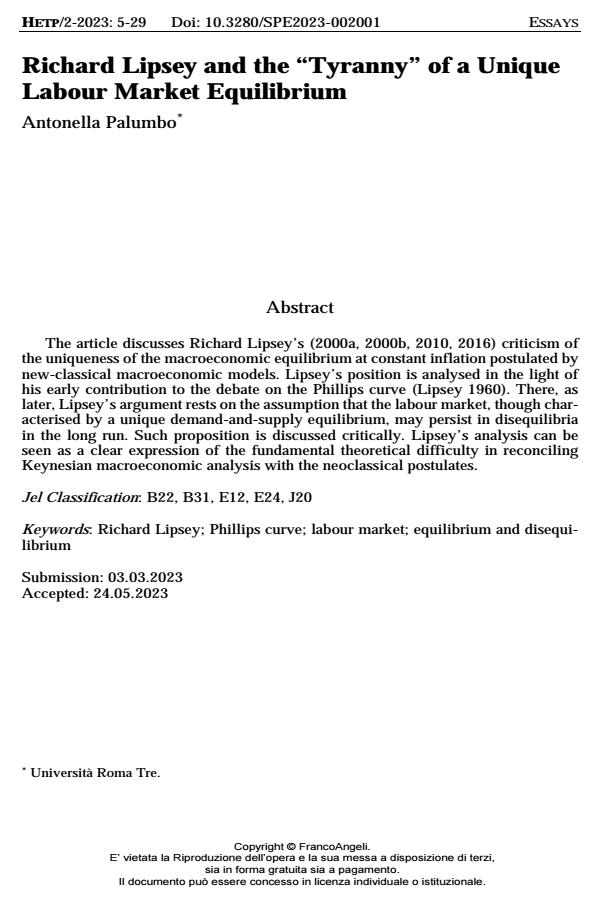Richard Lipsey and the "Tyranny" of a Unique Labour Market Equilibrium
Titolo Rivista HISTORY OF ECONOMIC THOUGHT AND POLICY
Autori/Curatori Antonella Palumbo
Anno di pubblicazione 2024 Fascicolo 2023/2
Lingua Inglese Numero pagine 25 P. 5-29 Dimensione file 117 KB
DOI 10.3280/SPE2023-002001
Il DOI è il codice a barre della proprietà intellettuale: per saperne di più
clicca qui
Qui sotto puoi vedere in anteprima la prima pagina di questo articolo.
Se questo articolo ti interessa, lo puoi acquistare (e scaricare in formato pdf) seguendo le facili indicazioni per acquistare il download credit. Acquista Download Credits per scaricare questo Articolo in formato PDF

FrancoAngeli è membro della Publishers International Linking Association, Inc (PILA)associazione indipendente e non profit per facilitare (attraverso i servizi tecnologici implementati da CrossRef.org) l’accesso degli studiosi ai contenuti digitali nelle pubblicazioni professionali e scientifiche
The article discusses Richard Lipsey’s (2000a, 2000b, 2010, 2016) criticism of the uniqueness of the macroeconomic equilibrium at constant inflation postulated by new-classical macroeconomic models. Lipsey’s position is analysed in the light of his early contribution to the debate on the Phillips curve (Lipsey 1960). There, as later, Lipsey’s argument rests on the assumption that the labour market, though characterised by a unique demand-and-supply equilibrium, may persist in disequilibria in the long run. Such proposition is discussed critically. Lipsey’s analysis can be seen as a clear expression of the fundamental theoretical difficulty in reconciling Keynesian macroeconomic analysis with the neoclassical postulates.
Parole chiave:Richard Lipsey; Phillips curve; labour market; equilibrium and disequilibrium
Jel codes:B22, B31, E12, E24, J20
Antonella Palumbo, Richard Lipsey and the "Tyranny" of a Unique Labour Market Equilibrium in "HISTORY OF ECONOMIC THOUGHT AND POLICY" 2/2023, pp 5-29, DOI: 10.3280/SPE2023-002001